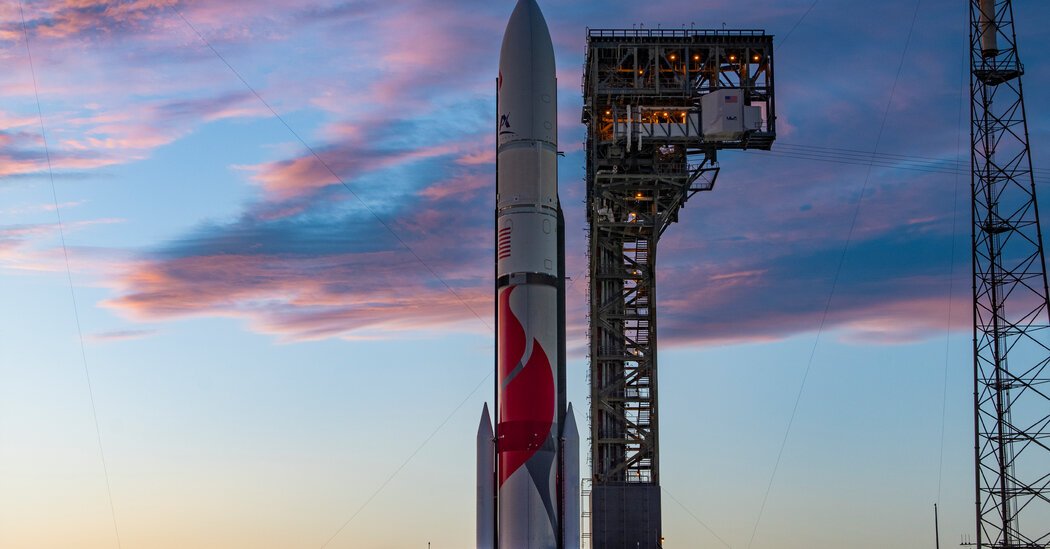Read more about the first Vulcan launch and the Astrobotic moon mission here.
A brand-new American rocket lifted off from a launchpad at Cape Canaveral, Fla., on Monday, and for the first time in more than 50 years, an American spacecraft will be headed toward the surface of the moon. The rocket is called Vulcan, and it was built by the company United Launch Alliance. Here’s what you need to know about its first flight.
The rocket completed the initial stages of its flight.
Vulcan launched on schedule at 2:18 a.m. Eastern on Monday. Coverage continues to be broadcast on NASA Television.
The rocket was powered up at 3:58 p.m. on Sunday according to U.L.A., and fueling got underway after 9 p.m., with the rocket loaded with more than 1 million pounds of propellants shortly after midnight.
The countdown proceeded without interruption and the rocket’s engines fired up seconds before liftoff, sending the vehicle into the dark Florida morning. Less than two minutes after the flight began, the rocket’s two smaller side boosters ejected and liquid methane and liquid oxygen-fueled rocket burned an eerie blue in space.
“Nice and smooth operation of the booster,” a launch official said on the live video stream.
About three minutes later, the Vulcan rocket’s first journey concluded and the upper stage of the vehicle, the Centaur, lit up for a series of maneuvers over next hour that would send the moon lander on its lunar journey.
What is the moon mission heading to orbit?
Astrobotic Technology of Pittsburgh is sending Peregrine, a robotic spacecraft, that is to land in Sinus Viscositatis — Latin for “Bay of Stickiness” — an enigmatic region on the near side of the moon. NASA is paying Astrobotic $108 million to take five experiments there, part of the space agency’s Commercial Lunar Payload Services program, or CLPS. The program aims to lower the cost of sending items to the lunar surface.









